Estate Services Oxford University
Facilities and Accommodation Keble College
International Code Council: Global Building Codes Tool

NOAA National Weather Service: Storm Total Maps and Verification
ASCE Codes & Standards Catalog
Engineers Joint Contract Documents Committee
Code and Standards Open for Comment
Public Comment for ASCE/EWRI 78-XX Guidelines for the Physical Security of Water and Wastewater/Stormwater Utilities (Comment Deadline 12/18/2023)
America’s Infrastructure Score: C-
Our tenure in the 2026 National Electrical Code will result in at least a 10 percent reduction in the cost of building premise wiring — (mostly in the feeder power chain) — in healthcare facilities; based on the results of last month’s meeting of Code Making Panel 15.
Assuming electrical power infrastructure is 15 percent of in a $920 million facility like this (excluding interior moveable fixtures), that would have meant an approximate $14 million reduction in cost. That cost savings cannot be realized because it was designed to an earlier version of the National Electrical Code.
Related:
New University of Michigan hospital to be named after philanthropists D. Dan and Betty Kahn
$920M Michigan Medicine tower tops out, targets 2025 opening
Art presents a different way of looking at things than science;
one which preserves the mystery of things without undoing the mystery.
“Interior de Ateliê” 1898 Rafael Frederico![]()
We are guided by four interdependent titles that set the standard of care for safety and sustainability of occupancies supporting the fine arts in education communities.
(1) Chapter 43: Spraying, Dipping and Coating Using Flammable or Combustible Material of NFPA 1: Fire Code. As a “code” the public has free access to the current 2021 Edition , and Chapter 43 at the link below:
NFPA 1 Fire Code / Chapter 43 Spraying, Dipping and Coating Using Flammable or Combustible Materials
You get a sense of the back-and-forth among the technical committee members from the transcripts of committee activity linked below:
First Revisions Report (282 pages)
Our interest lies in fire safety provisions for educational occupancies with activity involving paint, chemicals used with paint (art studios) and Class III combustible materials (garment design & prototyping).
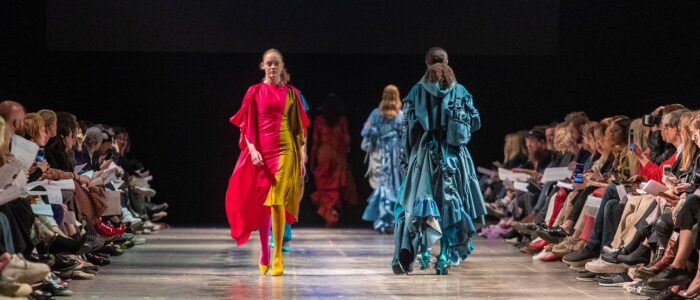
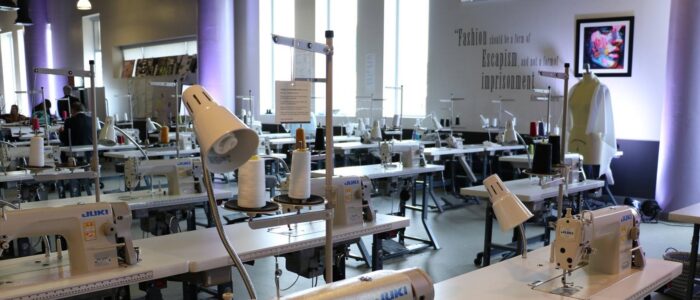
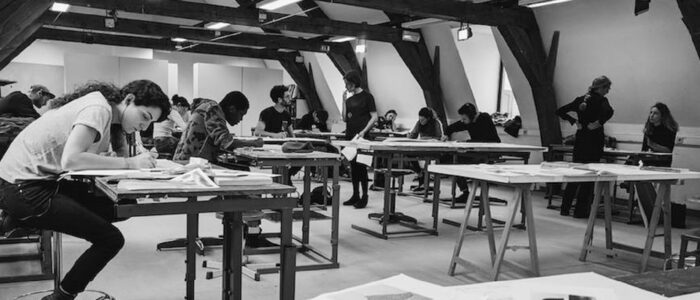
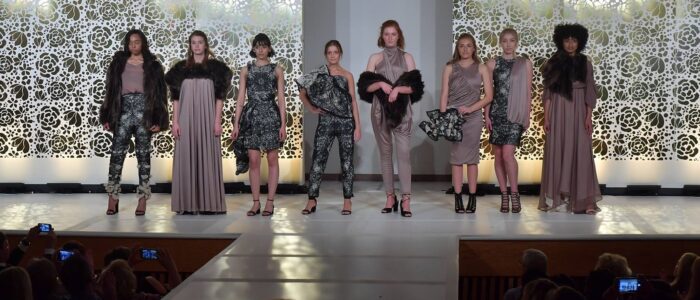
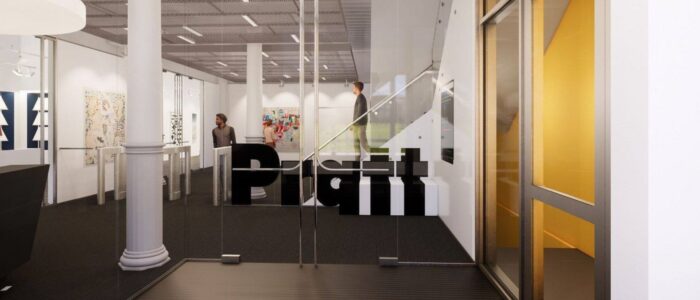

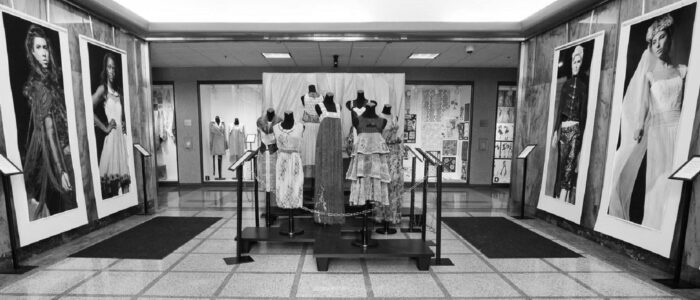
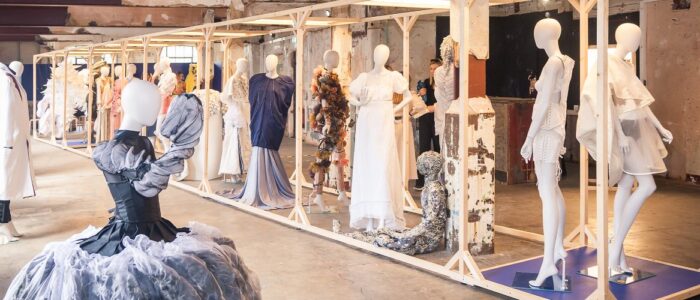
(2) NFPA also has another title — NFPA 33 Standard for Spray Application Using Flammable or Combustible Materials — provides more detail for instructional and facility maintenance operations activity.
(3) NFPA 101 Life Safety Code, much of which is derived from NFPA 1 (See: “How the Fire Code and Life Safety Code Work Together“)
(4) Finally, the International Code Council develops a competitor title — 2021 International Fire Code — which also provides fire safety standards for art, design and fashion studio safety. The IFC is developed in the Group A tranche of titles:
2021/2022 Code Development Group A
2024/2025/2026 ICC CODE DEVELOPMENT SCHEDULE
We encourage direct participation by education industry user-interests in the ICC and the NFPA code development process. A user interest in education community would have a job title similar to the following: Principal, Dean, President, Chief of Business Operations, Facility Manager, Trade Shop Foreman.
We maintain all four titles identified in this post on the standing agenda of our Prometheus (fire safety) and Fine Arts colloquia. See our CALENDAR for the next online meeting; open to everyone.
Issue: [10-31] [16-64]
Category: Fire Safety
Colleagues: Mike Anthony, Josh Evolve, Marcelo Hirschler
More
Northeastern University: Safety Guide for Art Studios
Princeton University: Art Safety
University of Chicago Art Studio Safety Policy
The parent title in the NFPA catalog — NFPA 1 — sets standards for fire lanes by addressing them within various chapters and sections; depending on the specific aspects of fire protection, access, and safety they pertain to. Here are some of the key sections and chapters in NFPA 1 that may include relevant information regarding fire lanes:
Since NFPA 1 covers a wide range of fire safety topics, including building design, fire protection systems, and emergency procedures, specific requirements related to fire lanes may be distributed throughout the document rather than consolidated in a single section. It’s important to carefully review the relevant chapters and sections of NFPA 1 to ensure compliance with applicable requirements for fire lane design, construction, and maintenance.
Best practice for determining snow zones, as the criteria for designating these zones can vary depending on factors such as geography, climate, population density, infrastructure, and available resources. However, municipalities typically develop their own criteria and guidelines based on these factors to create effective snow removal plans.
Common principles and factors that many municipalities consider when determining snow zones, as mentioned in the previous response. These include weather patterns, topography, traffic volume and patterns, residential density, critical infrastructure, public safety considerations, and feedback from residents and stakeholders.
Some municipalities may also adopt best practices and recommendations from organizations such as the American Public Works Association (APWA) or the National Association of City Transportation Officials (NACTO) to inform their snow removal planning processes. These organizations may offer guidance on snow zone designations, prioritization of routes, and effective snow removal techniques based on industry standards and research.
Ultimately snow zones respond to the specific needs and characteristics of each municipality, with the goal of efficiently managing winter weather events to ensure public safety and mobility.
We collaborate closely with the IEEE Education & Healthcare Facilities Committee which meets 4 times monthly in European and American time zones. Risk managers, electrical safety inspectors, facility managers and others are welcomed to click into those teleconferences also. We expect that concepts and recommendations this paper will find their way into future revisions of US and international electrical safety codes and standards. There is nothing stopping education facility managers from applying the findings immediately.
Electrical Safety of Academic Laboratories | 2019-PSEC-0204
Presented at the 55th IEEE Industrial Applications Society I&CPS Technical Conference | Calgary, Alberta Canada | May 6-9, 2019
Ω
Rodolfo Araneo, University of Rome “La Sapienza” | rodolfo.araneo@ieee.org
Payman Dehghanian, George Washington University | payman@gwu.edu
Massimo Mitolo, Irvine Valley College | mitolo@ieee.org
Abstract. Academic laboratories should be a safe environment in which one can teach, learn, and conduct research. Sharing a common principle, the prevention of potential accidents and imminent injuries is a fundamental goal of laboratory environments. In addition, academic laboratories are attributed the exceptional responsibility to instill in students the culture of the safety, the basis of risk assessment, and of the exemplification of the prudent practice around energized objects. Undergraduate laboratory assignments may normally be framed based upon the repetition of established experiments and procedures, whereas, academic research laboratories may involve new methodologies and/or apparatus, for which the hazards may not be completely known to the faculty and student researchers. Yet, the academic laboratory should be an environment free of electrical hazards for both routine experiments and research endeavors, and faculty should offer practical inputs and safety-driven insights to academic administration to achieve such a paramount objective. In this paper, the authors discuss the challenges to the electrical safety in modern academic laboratories, where users may be exposed to harmful touch voltages.
I. INTRODUCTION
A. Electricity and Human Vulnerabilities
B. Electrical Hazards in Academic Laboratories
II. ELECTRICAL SEPARATION
III. SAFETY IN ACADEMIC LABORATORIES WITH VARIABLE FREQUENCY DRIVES
IV. ELECTRICAL SAFETY IN ACADEMIC LIGHTING LABORATORIES
V. ACADEMIC RESEARCH LABORATORIES
A. Basic Rules of Engagement
B. Unidirectional Impulse Currents
VI. HAZARDS IN LABORATORIES DUE TO ELECTROMAGNETIC FIELD EXPOSURE
VII. WARNING SIGNS AND PSYCHOLOGICAL PERCEPTION OF DANGER
VIII. CONCLUSION
Safety is the most important practice in an academic laboratory as “safety and productivity are on the same team”. Electrical measurement and electrically-powered equipment of various brands and models are common in both teaching and research laboratories, highlighting the need to maintaining them continuously in an electrically-safe status. Annual reports on the occurrence of electrical hazards (i.e. shocks and injuries) in academic laboratory environments primarily discover the (i) lack of knowledge on using the electrical equipment, (ii) careless use of the energized electric facilities, and (iii) faulty electrical equipment or cords. The above does call for the establishment of safety-driven codes, instructions, and trainings for the academic personnel working with or near such devices for teaching, learning, experiments, and research. This paper provided background information on the concept of electrical safety in the academic laboratories, presented the safety challenges of modern academic laboratories, and offered solutions on how enhance the lab environment and research personnel safety awareness to avoid and control electrical hazards.
Issue: [19-129]
Category: Electrical, Facility Asset Management, Fire Safety, International
Colleagues: Mike Anthony, Rodolfo Araneo, Payman Dehghanian, Jim Harvey, Massimo Mitolo, Joe Tedesco
Related IEEE Research:
Strengthening and Upgrading of Laboratory Safety Management Based on Computer Risk Identification
Critical Study on the feasiblity of Smart Laboratory Coats
Clean Environment Tools Design For Smart Campus Laboratory Through a Global Pandemic
Design of Laboratory Fire Safety Monitoring System
Academic research laboratories in Austria:
Institute of Science and Technology Austria (IST Austria) – A research institute located in Klosterneuburg, Austria, that focuses on basic research in the natural and mathematical sciences.
Austrian Institute of Technology (AIT) – A research organization in Vienna, Austria, that conducts applied research in fields such as energy, health and environment, mobility, and security.
Institute for Quantum Optics and Quantum Information (IQOQI) – A research institute in Vienna, Austria, that focuses on theoretical and experimental research in quantum physics and information.
Vienna BioCenter (VBC) – A research campus in Vienna, Austria, that hosts multiple research institutes and centers focusing on life sciences, including molecular biology, genetics, and biomedicine.
Graz University of Technology – A research university located in Graz, Austria, that has several research laboratories and centers in fields such as engineering, computer science, and natural sciences.
These are just a few examples of academic research laboratories in Austria, and there are many more across the country in various fields and disciplines.
#Standards helfen, Ergebnisse aus Forschungs- und Innovationsprozessen schneller zu marktfähigen Produkten und Dienstleistungen zu machen. Wie die Brücke erfolgreich geschlagen werden kann, erfahren Sie am 13. Juni live in Wien.💡🌍💫https://t.co/rupEcLC0qK #Bridgit pic.twitter.com/3vRVQjbWYq
— Austrian Standards (@ATstandards) May 20, 2019
The heating and cooling requirements of K-12 schools, college and university educational, medical research and healthcare delivery campuses are a large market for boiler pressure vessel manufacturers, installers, maintenance personnel and inspectors. The demand for building new, and upgrading existing boilers — either single building boilers, regional boilers or central district energy boilers — presents a large market for professional engineering firms also. A large research university, for example, will have dozens, if not well over 100 boilers that heat and cool square footage in all climates throughout the year. The same boilers provide heating and cooling for data centers, laundry operations, kitchen steam tables in hospitals and dormitories.
The safety rules for these large, complex and frankly, fearsome systems, have been developed by many generations of mechanical engineering professionals in the American Society of Mechanical Engineers (ASME) Boiler and Pressure Vessel Code (BPVC). From the BPVC scope statement:
“…The International Boiler and Pressure Vessel Code establishes rules of safety — relating only to pressure integrity — governing the design, fabrication, and inspection of boilers and pressure vessels, and nuclear power plant components during construction. The objective of the rules is to provide a margin for deterioration in service. Advancements in design and material and the evidence of experience are constantly being added…”
Many state and local governments incorporate the BPVC by reference into public safety regulations and have established boiler safety agencies. Boiler explosions are fairly common, as a simple internet search on the term “school boiler explosion” will reveal. We linked one such incident at the bottom of this page.
The 2023 Edition of the BPVC is the current edition; though the document is divided into many sections that change quickly.
ASME Codes & Standards Electronic Tools
ASME Proposals Available For Public Review
ASME Section IV: Rules for the Construction of Heating Boilers (2019)
There are no consultations relevant to boilers or kitchen hot water systems open this time. This is a fairly stable domain at the moment. We direct you elsewhere to emergent topics:
Ghost kitchens gaining steam on college campuses
College: the Next Big Frontier for Ghost Kitchens
Illinois Admin. Code tit. 77, § 890.1220 – Hot Water Supply and Distribution
Design Considerations for Hot Water Plumbing
FREE ACCESS: 2019 ASME Boiler and Pressure Code (Section VI)
Two characteristics of the ASME standards development process are noteworthy:
We unpack the ASME bibliography primarily during our Mechanical, Plumbing and Energy colloquia; and also during our coverage of large central laundry and food preparation (Kitchens 100) colloquia. See our CALENDAR for the next online meeting, open to everyone.
Issue: [12-33] [15-4] [15-161] [16-77] [18-4] [19-157]
Category: District Energy, Energy, Mechanical, Kitchens, Hot Water
Contact: Eric Albert, Richard Robben, Larry Spielvogel
More:
Standards Michigan BPVC Archive
Big Ten & Friends Energy Conference 2023
Standards Michigan Workspace (Requires access credentials from bella@standardsmichigan.com).
School Boiler Maintenance Programs: How Safe Are The Children?
Boiler Explodes at Indiana High School
Engineers at @virginia_tech are boosting heat transfer by prompting bubbles to jump from a heated plate during boiling, potentially increasing power plant efficiency with microstructures: https://t.co/W1gLvhn15q pic.twitter.com/45PNRAEmpB
— ASME.org (@ASMEdotorg) January 30, 2024
New update alert! The 2022 update to the Trademark Assignment Dataset is now available online. Find 1.29 million trademark assignments, involving 2.28 million unique trademark properties issued by the USPTO between March 1952 and January 2023: https://t.co/njrDAbSpwB pic.twitter.com/GkAXrHoQ9T
— USPTO (@uspto) July 13, 2023
Standards Michigan Group, LLC
2723 South State Street | Suite 150
Ann Arbor, MI 48104 USA
888-746-3670
